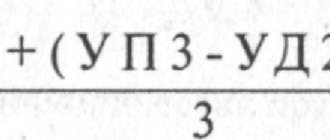Like any other action, a lie leaves an imprint on a person’s facial expression, behavior, and posture. Knowing these changes, you can determine the degree of sincerity of the interlocutor. Although in fairness, it should be noted that, unlike other psychological states, lies are more difficult to detect. There is no one universal sign of lying; judging by just one “symptom”, one can come to the erroneous conclusion that almost all people lie. However, there are certain types of behavior that may indicate that a person is experiencing stress, anxiety or psychological discomfort during a conversation.
You can only understand the true cause of restless behavior if you know the person well. It is necessary to know how he behaves in an ordinary, familiar environment, then all the metamorphoses that his behavior undergoes will be obvious. If you don’t know a person well, then it is better to start a conversation with abstract topics, general “harmless” questions, thanks to which you can get a general idea of the manner of communication, facial expressions and characteristic gestures for him, and only after that proceed to questions whose answers interest you . You should not pretend to be an investigator; this may cause anxiety in your interlocutor, which will distort the picture of natural behavior.
There are many signs that show up when a person is lying; 2 or more signs give reason to assume that the interlocutor is insincere. Assumption may give way to certainty if 3 or more signs are present. Characteristic signs of insincerity usually include:
Verbal signs of lying
- The eyes are the mirror of the soul, perhaps that is why liars cannot bear to look directly into the eyes and pretend to look at their surroundings and random objects. In fairness, it is worth noting that sometimes people who tell the truth can lower their eyes and avoid the gaze of their interlocutor, as they describe facts that do not characterize them from the best side. Moreover, many liars know about the existence of this sign and, wanting to prove their “sincerity,” they persistently look into the eyes of their interlocutor. Often a lie is revealed by rubbing the eyes or rapid blinking.
- Changing the tempo and pitch of the voice (if the person does not have speech impediments). Repeating the interlocutor’s question, answering a question with a question, too many hesitations and pauses indicate that the person is making it up on the fly, and therefore slows down the pace of speech in order to gain time to compose a story.
- Bustle. Lying often leads to a person becoming fussy. The intensity of the manifestation of this symptom depends on the habituality of lying for a person. Anxiety manifests itself in the fact that a person cannot find a comfortable position, constantly moves, changes his position, taps his fingers on the table, jerks his leg, bites his lips.
- Reservations, contradictions. A liar can be caught by being attentive to the details of his story; people often make unconscious slips and get confused about the facts. However, if a person constantly remembers something and adds new details to the story, then most likely he is telling the truth.
- Changing the topic of conversation. A liar may try to take the conversation to a different plane, but such a turn is also possible in the case when a person is simply bored with the topic of the conversation or is unpleasant for him for some reason. Therefore, this sign has weight only in combination with others. An excess of details that are not related to the topic of the conversation indicates that the person is trying to distract the interlocutor from important points. When changing the topic of conversation, a liar will happily jump at the opportunity to escape from an unpleasant conversation, while an honest person would prefer to find out everything to the end.
Verbal and non-verbal communication - what is it?
Verbal - This word comes from the Latin "verbalis", which means verbally . Those. communication in this case occurs through words.
There are three types of verbal communication:
- Speech is communication through words (dialogues, monologues).
- Written communication - by hand, printing on a computer, SMS, etc.
- Internal - your internal dialogue (thought formation).
Nonverbal - other types of communication other than verbal. What could it be:
- Gestures, facial expressions and postures - all this tells us a lot if you know how to read them.
- Visual - scanning a person in the first seconds when you see him: determining gender, age, assessing appearance and facial expression.
- Acoustic nonverbal perception is an assessment of the voice (its rhythm, timbre, volume, brightness, pauses, cough, filler words).
- Tactile non-verbal communication - touching (has a very significant meaning).
- Some smells attract you, while others repel you.
- Mobility - enlivens perception, but if there is too much mobility, fatigue occurs.
- Boundaries of personal space - crossing them takes a person out of his comfort zone or, conversely, brings him closer together.
Nonverbal signs of lying
- Self-defense. A person who has nothing to hide does not need to worry about self-defense, show aggression and other negative emotions, trying to shield himself. The “closed” posture typical of this state can also speak of self-defense: a person strives to turn away from the interlocutor as much as possible, fence himself off with objects, cross his arms in front of him or hide them in his pockets, cross his legs, and hunch over.
- Typical signs of lying: frequent touching of the nose, eyes, lips, neck, hair, coughing - indicate a person’s anxiety, but at the same time, these gestures can indicate the presence of allergic manifestations. Touching the neck and hair is often used by women when flirting. Sometimes “suspicious” behavior results from excessive anxiety about the need to voice the “bitter” truth.
- Conflicting body language. When a person says one thing, but his facial expressions and posture express something completely different, for example, a person agrees to a proposal to go to the cinema, but the expression on his face expresses a complete lack of enthusiasm for this idea, then it is quite reasonable to assume that he is lying. Feigned good nature, benevolence or irony often become a cover for a liar who needs to convince his interlocutor that he has no reason to worry and be nervous.
- Body Even if a person maintains external calm, his body expresses signs of psychological discomfort, regardless of his desire, he becomes covered in perspiration, breathing and heartbeat become more frequent, dry mouth appears, and the pupils dilate.
- Skepticism: people who are accustomed to insincerity, in most cases, are distrustful of other people, since they believe that everyone is subject to this vice, while honest people easily trust others.
Attentive attention to your interlocutor and his body signals during communication can tell a lot about his attitude towards you and the degree of sincerity.
General facial expression
The peculiarities of nonverbal communication are also manifested in the interlocutor’s gaze. Sometimes, just by watching a face, you can learn more about a person, about his inner world, experiences and fears, than by listening to his long speech. How can you detect a lie by analyzing the general facial expression? Three ways to detect untruths are:
- Asymmetry. The two halves of a person’s face always express the same feelings, only on one side they are stronger, on the other they are slightly weaker. In any case, the facial muscles work synchronously. If you notice a disagreement between them, this is a clear sign that you are being lied to. The interlocutor is trying to demonstrate a feeling that he does not actually experience.
- Localization in relation to words. If emotions adequately color phrases, it means that they are talking to you without deceiving you. If they are late, then most likely the interlocutor is “faking.” Having said the phrase, he selects the desired facial expression for a split second, which indicates his insincerity. Truth is manifested in complete harmony and simultaneity of speech and emotions. Russian theater and film director Sergei Eisenstein called this phenomenon a “sound gesture.”
- Temporal characteristics. If a facial expression containing one emotion lasts about 5 seconds, it means you are being deceived. If it does not change within 10 seconds, they are definitely lying to you. Sincere feelings on the face change much faster and more often. Exceptions include deep depression, intense rage, and genuine ecstasy. Other genuine feelings are usually very short-lived. They last only a few seconds. A prolonged demonstration of one emotion is most likely a mask behind which the interlocutor hides his real feelings.
Detecting lies by observing general facial expressions is very effective. This can be learned without much effort.
Signs of a liar
How to understand that a man is deceiving a woman? It is enough to ask some questions and carefully monitor the person’s reactions. It is by gestures and facial expressions that a liar can be identified.
There are a lot of lies in life. But the most unpleasant lie is when it comes from close people. How to recognize it?
- Avoiding answering a question
This may indicate that he simply does not want to say anything so as not to lie. Or he is afraid that he will be “pinned to the wall.”
- The man shakes his head to the sides
This indicates that he in every possible way denies his own words.
- Frequently touching your face with your hands
- The pupils dilate, while the gaze avoids contact with the woman’s eyes
The gaze is directed slightly down and to the side.
- Man's constrained behavior
He tries to suppress his emotions, so he becomes clamped and constrained.
- Difficult answers to clarification questions
Often, it is clarifying questions that help determine whether a person is lying or not. He may say one thing at first, and after a while - something completely different. In your questions, specify certain details that will help check the man.
- Frequent eye blinking
In one minute, a person in a calm state blinks about six times. The liar begins to do this much more often. In addition, there is a short pause before answering the question.
- Confusing questions
Typically, such questions include those that require a specific answer: affirmative or negative.
- Raise your eyes a little to the right and up
It is very easy to determine what a man is doing when answering a question - lying or remembering. Every person's brain is divided into left and right hemispheres. The left is responsible for memory, the right for imagination. If a man raised his eyes to the right, it means he is coming up with an answer, if to the left, he is remembering.
- Excessive enthusiasm when describing certain events
Enthusiasm can manifest itself in changes, for example, in the tone of the voice, etc. At the same time, attention is drawn to certain objects. A liar does this to hide any changes in his behavior from the woman.
Do not forget that there are skilled liars in this world who are almost impossible to bring to clean water. The good news is that there are significantly fewer such craftsmen than ordinary people.
When "pulls to the left"
This side is more truthful and will never let you down if you are trying to guess whether the truth or lie is coming from the lips of your interlocutor. The left side of the face, left arm or leg reveals real feelings and emotions. If, during a conversation with you, a person does not know where to put his left hand, it dangles randomly in the air, tugs at his pockets and collar, and thoughtlessly makes somersaults - this is a sign that they are telling you a lie. The left leg also gives away its owner. During outright lies, she periodically bends at the knee or draws figures on the ground.
Why the left side? The thing is that the brain has better control over the right half of the body. We involuntarily pay attention to it, completely losing sight of what the left side is doing at this time. And she can “blab out” our secrets and reveal our true mood and state of mind.
The thing is that different hemispheres of the brain are responsible for human actions. So, its right side gives free rein to emotions, imagination, fantasy and creativity. And the left controls speech, intellect, and analytical thinking. In this case, the control is crossed. Therefore, the right side of a person’s face and body is more controlled, while the left can unconsciously turn our inner self inside out.
Remember that the hand, especially the left, is your biggest enemy. No other part of the body is capable of so clearly convicting us of a lie. Therefore, if you want to hide your experiences and real feelings from others, it is better to put it in your pocket in advance, clench it into a fist and do not move it. In this way, you may be able to hide the deception if your behavior and facial expressions do not reveal your true emotions.
How to distinguish truth from lies
Each person perceives truth and lies differently. We are interested in a person's reaction to untruth. How he perceives it and how he reacts. What pushes people to lie?
As everyone knows, truth and lies are moral categories that influence a person in one way or another. Each of us lies in life, some more, some less. If you ask a person why he is lying, we will get a fairly simple answer. You will hear that there are many reasons for lying. I lie at work in order to make a good impression on business partners or employees. I lie in my family so that they worry less and don’t get nervous over trifles. You can also hear the answer that lying or untruth is a reaction to an attack and a way of protecting against difficulties and problematic situations. Often lying is a way to protect loved ones and family. But still, how does a person perceive the fact that he is being told a lie?
Reaction to lies
Each person has their own reaction - some are indignant, some will simply take note, and some will simply closely monitor the person who is lying. He will note certain actions, which will then correspond to the fact that the person is lying.
There are quite a large number of theories and algorithms for tracking liars in the world. And each of the methods is unique in its own way, but they have a lot in common. You can select from the entire amount of information what will help you identify liars.
- Firstly, if you don’t believe a person and want to catch him in a lie, just start watching his eyes and face. While lying, he will touch the corner of his nose or mouth with his hands, and may cover his mouth with his hand.
- Try to follow your eye movements. Most often, when people lie, they look to the right and blink more often. They do not make eye contact or may stare into your eyes.
- In addition to the eyes, the body says that a person is lying. Most often, your opponent tries to stand sideways or at a distance.
Thus, it can be argued that a lie is a person’s defensive reaction to various factors, and everyone reacts to it in their own way. But still, a lie will not always help you achieve the desired result, no matter how you look at it, the truth is the most powerful argument in a dispute, in a person’s life.
Psychologist Konstantin Lysenko
Gestures, facial expressions, eye movements can tell more about your interlocutor than he himself sometimes wants. Knowing sign language is the key to successful negotiations and sales. A small Quiz test will help you understand how well you understand non-verbal communication.
Lies and gait
The peculiarities of nonverbal communication are colorfully manifested in the way a person walks and what his steps are.
Psychologists have always claimed that a positive and joyful individual has an easy gait. It's like he's flying. At the same time, he can walk quickly, being on the rise of good emotions. But an evil person’s steps are heavy. The sad person walks, haggard, with his shoulders and head down, confident in himself - straight and slowly. Recently, scientists even made a device that, from a distance, can detect the mood of an object only by its gait. With the help of the device, they will be able not only to catch people lying, but also to diagnose illnesses of both mental and physical nature. The device is capable of recording 100 micro-movements in just one second. After analyzing them, you can put together a clear and truthful picture of the internal state of the “experimental” person.
The purpose of this device is to predict possible severe depression and stress in a person in order to take timely measures. It will be very useful in psychiatry. It will be possible to diagnose complex mental illnesses and even epileptic seizures. The apparatus will also play a big role in politics. By installing such a device near an official, people will be able to understand his true intentions and the deceitful manifestations of his nature.
How to expose a liar
The theory of lies provides several techniques with which you can recognize lies:
- A liar needs to be talked into. Tell him that you didn’t understand his story well and ask him to retell it again. This task is very difficult even for a professional deceiver. After all, you need to accurately repeat all the details that he might have already forgotten about in the process of lying. If you ask to retell the story from the end, the liar will definitely get confused.
- Ask the right questions. That is, those to which he must give an accurate answer. For example, you can say: “Clarify this point in detail”; “Describe in more detail,” and so on. Questions should be general first, leave detailed ones for later. It’s ideal when the interlocutor wanders away from the topic and forgets himself - it’s easier for him to let it slip. Go back and ask something about the beginning of the story. The narrator will have to strain his brain to remember what he said a couple of minutes ago, and this is quite difficult.
- Listen very carefully. Make an interested face. Sometimes frown as if you doubt something. The liar carefully watches your expression and reaction. Any bewilderment or distrust in your eyes confuses all his cards. He begins to get confused, stutter, turn red and even sweat.
Don't get angry if a person lies. You already know what to do and how to confuse him. Remember that superiority is on the side of truth, lies will always be detected and punished according to their deserts.
Gestures of lies during conversation
Based on information on how to recognize a lie by facial expressions, you can identify a liar who is in front of your eyes. But professional verifiers also use verbal signals in their work.
Lie Gestures: Disclaimers
No matter how well a legend has been learned, a liar can make a slip of the tongue. If it popped up only once, then you shouldn’t consider it as an absolutely accurate marker of untruth. But if slips of the tongue are repeated several times during moments when the narrator is excited, you should be wary. There is a very high probability that the narrator is telling a lie.
Lie Gestures: Pauses in Speech
Pauses in speech are one of the tools of manipulation in order to achieve the desired reaction from the interlocutor. But a liar needs time to remember a previously composed story and formulate an answer to a question, so he remains silent or answers vaguely. This is especially noticeable if the person previously spoke lively, without interruptions.
Memorized repetition phrases
Presenting a lie so that it is accepted as the truth is not easy; it requires preparation. A liar has to come up with a story in advance, rehearse it, and think about how to answer questions.
You can suspect a person of lying by the way he uses learned phrases. Often he inserts them out of place or says unnecessary things.
In this way, the liar plays for time, determines the best model of behavior in the current situation, and figures out what to say next on the fly. This strategy gives the liar time to think about a “truthful” answer, or he prepares for an attack.
Often, liars give themselves away with tirades, uttering a long series of phrases in a very emotional way. This strategy is used to “chat” the interlocutor, to lead him away from the topic of interest. When pronouncing a tirade, a person himself becomes captive of emotions and makes mistakes, but does not notice it.
Inexperienced liars are caught in the most primitive mistakes. They deny obvious facts, use a large stream of incoherent information (“word salad”), mumble, or try to avoid the topic. Often, instead of giving a truthful answer, they try to accuse the other person of lying, stir up his emotions, or force him to remain silent.
Irina Sherbul










